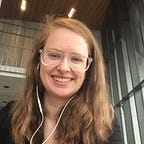It’s Not Uber For Farmers
Quick Recap: Prasenjit and I are students at Cornell Tech doing research on building a platform to connect farmers with institutional buyers like hospitals or schools. We want to compare local vs. non-local food on price and food miles. Our goal is to show that by buying directly from local farmers buyers can save on both. I used to be a farmer in Upstate New York.
So far our adventure has included Qualitative Interviews, exploring the Ag Census, and finding data on the Origin of Every Product. We’re building an algorithm that matches farmers and buyers. Setting prices is tricky.
We’re writing a bipartite matching algorithm to match farmers and buyers. Matching algorithms already exist. We’re not creating anything technologically novel. The exciting part is figuring out how to make the tech work in a new situation
First, I looked at the Uber problem we worked on for our networks and markets class from last semester (Thank you to Bharath and Jo-Anne for your patient explanations). We built a rudimentary version of Uber that matched riders and drivers to maximize utility for both parties. Drivers don’t want to have to drive a long way to pick up riders and riders want the cheapest rides. You know how Uber works.
Uber is a two-sided marketplace just like Empire State of Food, so I thought I could just tweak a few things and make it work for our situation. At first, I just did the dopey thing and substituted rider and driver for buyer and farmer in the code. This helped me understand the Uber problem better and realize that it was not as close to our situation as I had originally thought.
Empire State of Food is matching farmers to buyers based on the quantity of product, not location. While we are trying to create more opportunities for local farms, once a farm is considered local, being more local doesn’t make that farmer more likely to be matched with a particular buyer.
For example, if Farm A is 10 miles away from the buyer and Farm B is 50 miles away, the distance doesn’t matter to us because both farms fall within out local definition of less than 100 miles away. Our reasoning is that these distances are negligible when compared to buying produce from California or Chile. We just care that if the buyer orders 400 pounds of kale, a local farmer can deliver 400 pounds of kale.
We are also holding price constant for all local farms. Part of this is to eliminate the possibility of farmers undercutting each other. This would favor larger farms that operate at a bigger scale and farms that have the financial cushion to take a loss. Another big reason to hold price constant is to create consistency for the buyers. Price is not a function of distance — unlike Uber.
Both of these decisions about location and price are helpful for simplifying our work as well. We’re treating delivery as a separate problem that does not impact price or matches. We have been operating under the assumption that third party companies will be able to handle deliveries.
Sidenote: I feel validated that Uber acquired a grocery delivery company Cornershop. This is not exactly the same because it is a B2C company instead of B2B, but it’s close enough to imagine that in the future something like Uber could be doing smaller-scale wholesale deliveries for farmers.
Because cost is a function of location in the Uber problem this turned out to be a much bigger change than I had originally anticipated — the matching for us is different. It is about preferences rather than prices.
This turns our problem into a Gale-Shapely algorithm. We will be giving farmers a score based on their ability to fulfill an order and translating that into preferences; buyers prefer farmers with high scores. We’re investigating the Santa Gift Matching Challenge on Kaggle because this is a better proxy for matching farmers and buyers.
Right now, we’re only focusing on making the algorithm work for kale. I am excited for the algorithm to be able to output which buyers are matched with which farmers, how much kale gets sold in total and per farm, and how much unmet demand for local kale there is.
